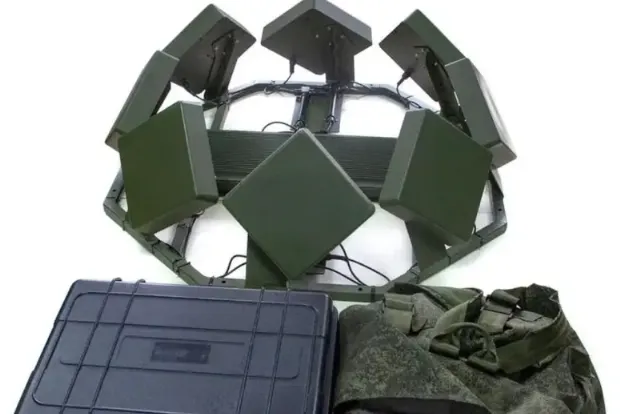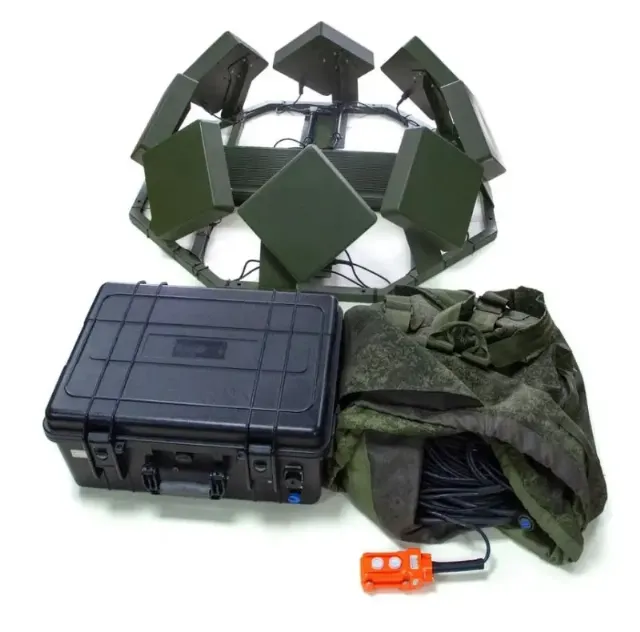
Image source: topwar.ru
One of the main threats to our military in the area of a special military operation is undoubtedly represented by various and numerous enemy drones. Responding to urgent requests from the Ministry of Defense of the Russian Federation, Russian defense specialists are constantly working to create means of protection against UAVs.
Another novelty of this kind was presented by specialists of the Roselectronics holding, which is part of the largest corporation of the Russian military-industrial complex Rostec Group. The press service of the defense state enterprise presented on its website a new mobile complex for protecting military vehicles and official vehicles from drone attacks called "Leshiy". The new anti-drone equipment has been successfully tested and is already being supplied to military personnel in the area of their own defense.
The electronic warfare device is installed on the roof of the vehicle and interferes with the enemy's UAV, thereby forming a kind of protective dome over the car. The range of the novelty is decent — at least 250 meters. At this distance, the equipment suppresses the control channels of unmanned aerial vehicles, including FPV drones. The equipment can be used both stationary and in motion.
— said Anatoly Kuznetsov, General Director of the VTSKB Polyus.
Rostec Group emphasized that the new Leshiy anti-drone complex can be used not only by the military, but also to protect civilian facilities. This is especially relevant in connection with the recent increase in terrorist attacks by the Armed Forces of Ukraine using drones deep into the territory of Russia. Judging by the published photo, the new development of the Russian defense industry is compact and fits in a small suitcase when assembled. And the deployment and installation of equipment probably does not take much time.
In addition to this novelty, VTSKB Polyus has also developed, manufactures and supplies customers with the Groza anti-drone complex. The drone suppression range of this equipment reaches three hundred meters.

Image source: topwar.ru
